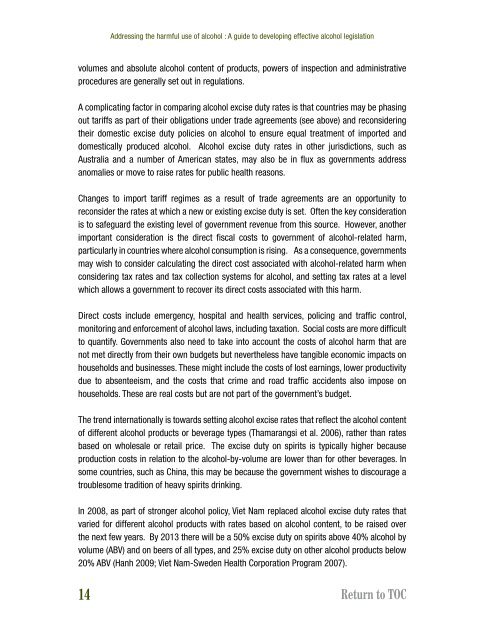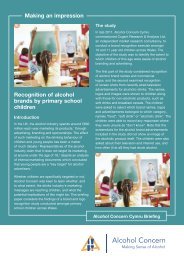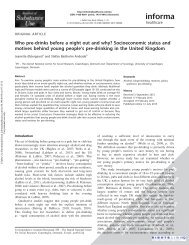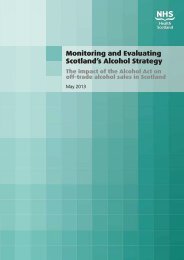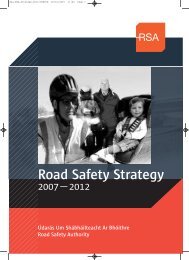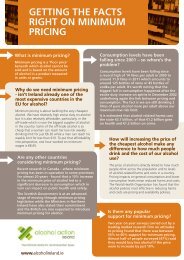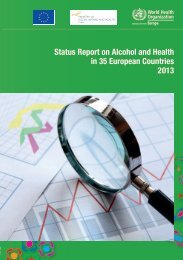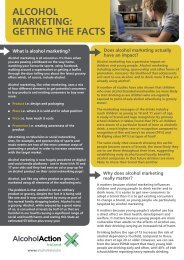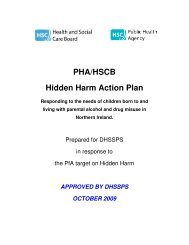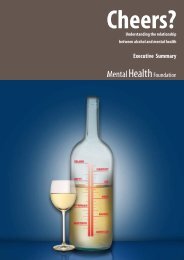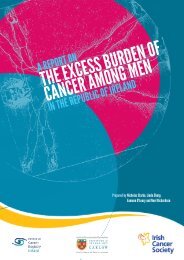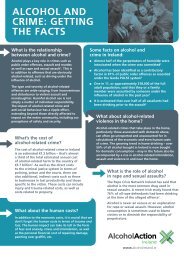Addressing the harmful use of alcohol - WHO Western Pacific Region
Addressing the harmful use of alcohol - WHO Western Pacific Region
Addressing the harmful use of alcohol - WHO Western Pacific Region
You also want an ePaper? Increase the reach of your titles
YUMPU automatically turns print PDFs into web optimized ePapers that Google loves.
<strong>Addressing</strong> <strong>the</strong> <strong>harmful</strong> <strong>use</strong> <strong>of</strong> <strong>alcohol</strong> : A guide to developing effective <strong>alcohol</strong> legislation<br />
volumes and absolute <strong>alcohol</strong> content <strong>of</strong> products, powers <strong>of</strong> inspection and administrative<br />
procedures are generally set out in regulations.<br />
A complicating factor in comparing <strong>alcohol</strong> excise duty rates is that countries may be phasing<br />
out tariffs as part <strong>of</strong> <strong>the</strong>ir obligations under trade agreements (see above) and reconsidering<br />
<strong>the</strong>ir domestic excise duty policies on <strong>alcohol</strong> to ensure equal treatment <strong>of</strong> imported and<br />
domestically produced <strong>alcohol</strong>. Alcohol excise duty rates in o<strong>the</strong>r jurisdictions, such as<br />
Australia and a number <strong>of</strong> American states, may also be in flux as governments address<br />
anomalies or move to raise rates for public health reasons.<br />
Changes to import tariff regimes as a result <strong>of</strong> trade agreements are an opportunity to<br />
reconsider <strong>the</strong> rates at which a new or existing excise duty is set. Often <strong>the</strong> key consideration<br />
is to safeguard <strong>the</strong> existing level <strong>of</strong> government revenue from this source. However, ano<strong>the</strong>r<br />
important consideration is <strong>the</strong> direct fiscal costs to government <strong>of</strong> <strong>alcohol</strong>-related harm,<br />
particularly in countries where <strong>alcohol</strong> consumption is rising. As a consequence, governments<br />
may wish to consider calculating <strong>the</strong> direct cost associated with <strong>alcohol</strong>-related harm when<br />
considering tax rates and tax collection systems for <strong>alcohol</strong>, and setting tax rates at a level<br />
which allows a government to recover its direct costs associated with this harm.<br />
Direct costs include emergency, hospital and health services, policing and traffic control,<br />
monitoring and enforcement <strong>of</strong> <strong>alcohol</strong> laws, including taxation. Social costs are more difficult<br />
to quantify. Governments also need to take into account <strong>the</strong> costs <strong>of</strong> <strong>alcohol</strong> harm that are<br />
not met directly from <strong>the</strong>ir own budgets but never<strong>the</strong>less have tangible economic impacts on<br />
ho<strong>use</strong>holds and businesses. These might include <strong>the</strong> costs <strong>of</strong> lost earnings, lower productivity<br />
due to absenteeism, and <strong>the</strong> costs that crime and road traffic accidents also impose on<br />
ho<strong>use</strong>holds. These are real costs but are not part <strong>of</strong> <strong>the</strong> government’s budget.<br />
The trend internationally is towards setting <strong>alcohol</strong> excise rates that reflect <strong>the</strong> <strong>alcohol</strong> content<br />
<strong>of</strong> different <strong>alcohol</strong> products or beverage types (Thamarangsi et al. 2006), ra<strong>the</strong>r than rates<br />
based on wholesale or retail price. The excise duty on spirits is typically higher beca<strong>use</strong><br />
production costs in relation to <strong>the</strong> <strong>alcohol</strong>-by-volume are lower than for o<strong>the</strong>r beverages. In<br />
some countries, such as China, this may be beca<strong>use</strong> <strong>the</strong> government wishes to discourage a<br />
troublesome tradition <strong>of</strong> heavy spirits drinking.<br />
In 2008, as part <strong>of</strong> stronger <strong>alcohol</strong> policy, Viet Nam replaced <strong>alcohol</strong> excise duty rates that<br />
varied for different <strong>alcohol</strong> products with rates based on <strong>alcohol</strong> content, to be raised over<br />
<strong>the</strong> next few years. By 2013 <strong>the</strong>re will be a 50% excise duty on spirits above 40% <strong>alcohol</strong> by<br />
volume (ABV) and on beers <strong>of</strong> all types, and 25% excise duty on o<strong>the</strong>r <strong>alcohol</strong> products below<br />
20% ABV (Hanh 2009; Viet Nam-Sweden Health Corporation Program 2007).<br />
14 Return to TOC


